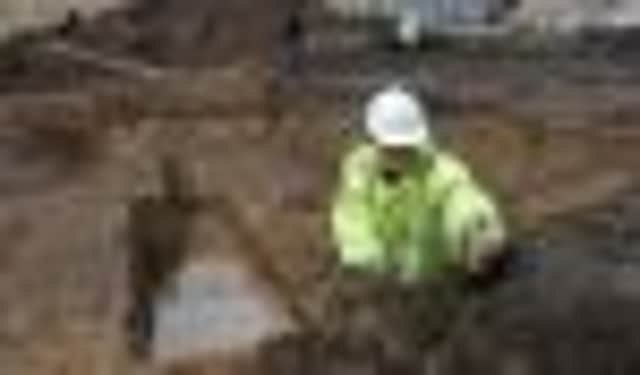Citadel broken by the Siege of Leith gives up its secrets


Experts hope to unlock secrets of the defences built under the orders of Mary of Guise when the seat of Scotland’s government moved to Leith in 1548.
About 3,000 French troops were brought in to defend the port, but had to be forced out 12 years later when the “Siege of Leith” triggered the end of the Auld Alliance between Scotland and France, speeding the local decline of the Catholic Church.
Advertisement
Hide AdAdvertisement
Hide AdIt is the first time archaeologists have had a chance to examine a substantial part of the ancient defences – the remains of which were not built over until the 1850s.
Leith’s defences are of interest to historians because they were the first built in Scotland with European features meant to withstand cannon. A month-long dig is now planned to explore part of the site, which is hidden behind hoardings off Great Junction Street.
The late medieval defences – now mainly covered by development – bounded an area covered by Bernard Street, Constitution Street, Sandyport and Great Junction Street. A trench at least 12 yards wide and five yards deep was built, with fortifications another four or five feet in height. They were initially built to repel English forces from the strategically important port.
However, the French troops brought in to help protect Mary of Guise – mother to Mary Queen of Scots – came under pressure from local people leading to the famous siege.
It only ended in June 1560 with the death of the Queen Regent at Edinburgh Castle, which led to the Treaty of Edinburgh, under which the French agreed to destroy their fortifications and go home.
The defences were discovered after the recent buy-out of the site – the scene of a massive supermarket fire 12 years ago – by a housing association.
However, although the site of the development was known to be on the western boundary of the defences, it was not known if any remains were intact.
Gordon Cameron, development director at the Port of Leith Housing Association, which will be building 32 homes on the site, said: “It is not that unusual for an archaeological dig to happen before a housing development gets under way in Edinburgh because the city has so much history, but we had no real idea whether there was anything underneath the ground.
Advertisement
Hide AdAdvertisement
Hide Ad“The site was cleared several years ago, but there were issues with multiple owners and the property downturn which held development up.”
John Lawson, city archaeologist, said “We thought it was likely there would be some remains here because we know that Great Junction Street marks the line of the old defences but what we’ve found is in much better condition than we had expected.”